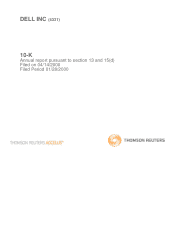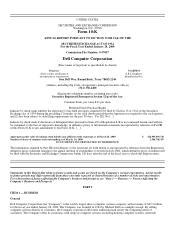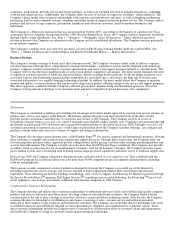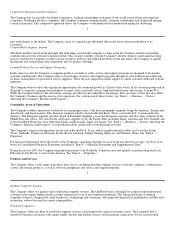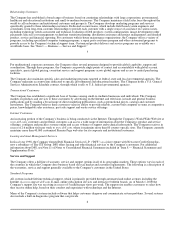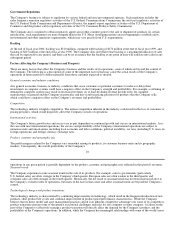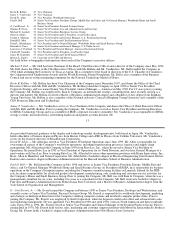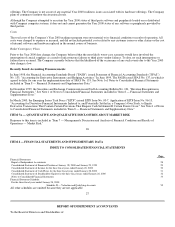Dell 1999 Annual Report Download - page 10
Download and view the complete annual report
Please find page 10 of the 1999 Dell annual report below. You can navigate through the pages in the report by either clicking on the pages listed below, or by using the keyword search tool below to find specific information within the annual report.
advanced technology companies, continuing technological advancement, which is a significant driver of customer demand, is largely
beyond the control of the Company.
Inventory management/supplies
The Company's direct business model gives it the ability to operate with reduced levels of component and finished goods inventories,
and the Company's financial success in recent periods has been due in part to its asset management practices, including its ability to
achieve rapid inventory turns. As evidenced in the second half of fiscal year 2000, temporary disruptions in component supply
availability can unfavorably affect the Company's short term performance. While supply conditions have generally been favorable
both to the Company and to the industry, in recent years less favorable supply conditions, as well as other factors both within and
beyond the Company's control, may require or result in increased inventory levels in the future.
The Company's manufacturing process requires a high volume of quality components that are procured from third party suppliers.
Reliance on suppliers, as well as industry supply conditions, generally involves several risks, including the possibility of defective
parts (which can adversely affect the reliability and reputation of the Company's products), a shortage of components and reduced
control over delivery schedules (which can adversely affect the Company's manufacturing efficiencies) and increases in component
costs (which can adversely affect the Company's profitability).
The Company has several single-sourced supplier relationships, either because alternative sources are not available or the relationship
is advantageous due to performance, quality, support, delivery, capacity or price considerations. If these sources are unable to provide
timely and reliable supply, the Company could experience manufacturing interruptions, delays or inefficiencies, adversely affecting its
results of operations.
Risk on financial instruments
The Company regularly utilizes derivative instruments to hedge its exposure to fluctuations in foreign currency exchange rates and
interest rates. In addition, the Company utilizes equity instrument contracts to execute repurchases of its common stock under its
Board-authorized stock repurchase program. Some of these instruments and contracts may involve elements of market and
11
credit risk in excess of the amounts recognized in the financial statements. For additional information about risk on financial
instruments, see "Item 7 — Management's Discussion and Analysis of Financial Condition and Results of Operations — Market
Risk."
Strength of infrastructure
The Company has grown at a rapid pace, requiring enhancement and expansion of its management team, information systems,
manufacturing operations and other aspects of its infrastructure. The Company's continued success and profitability partly depends on
its ability to continue to improve its infrastructure (particularly personnel and information systems) to keep pace with the growth in its
overall business activities.
Patent rights
The Company's continued business success may be largely dependent on its ability to obtain licenses to intellectual property
developed by others on commercially reasonable and competitive terms. If the Company or its suppliers are unable to obtain desirable
technology licenses, the Company could be prohibited from marketing products, could be forced to market products without desirable
features or could incur substantial costs to redesign its products, defend legal actions or pay damages.
Trademarks and Service Marks
Several U.S. trademarks and service marks appear in this Report. Dell, the Dell logo, Dimension, Latitude, OptiPlex, Dell Precision,
Inspiron and PowerEdge are registered trademarks of the Company, and DellWare, Gigabuys, ReadyWare and SelectCare are
registered service marks. PowerApp, OptiFrame and PowerVault are trademarks of the Company, and BusinessCare, BusinessCare
Plus, DellPlus, DirectLine, Premier Access and Premier Pages are service marks. This Report may also contain trademarks and
tradenames of other entities; the Company disclaims proprietary interest in the marks and names of others.
12
Executive Officers of the Company
The following table sets forth the name, age and position of each of the persons who were serving as executive officers of the
Company as of March 31, 2000.
Name Age Position
Michael S. Dell 35 Chairman of the Board and Chief Executive Officer

